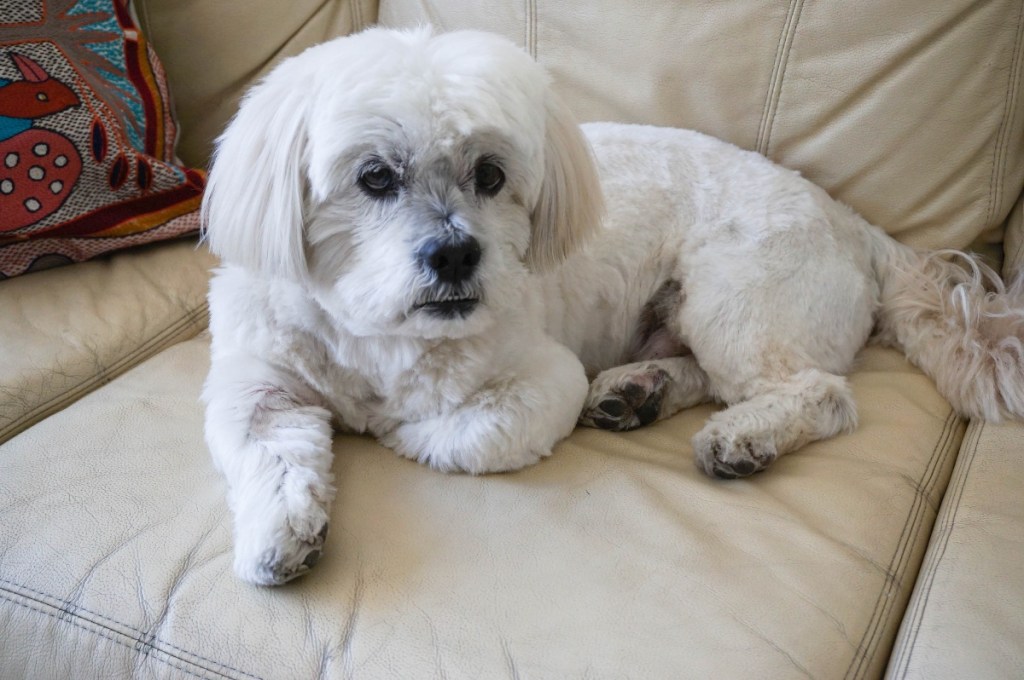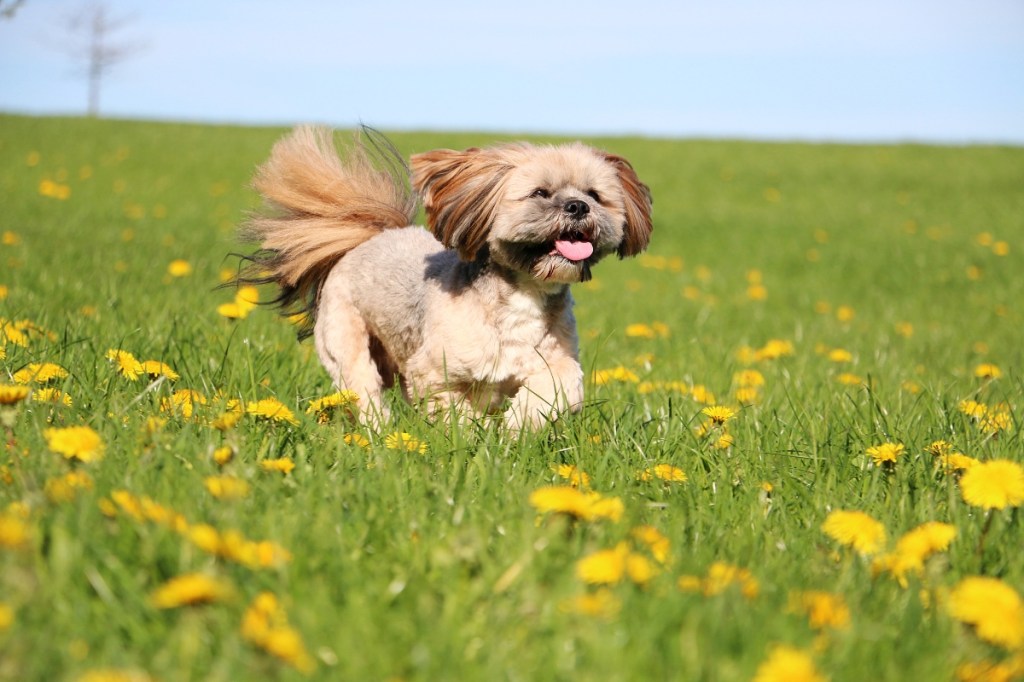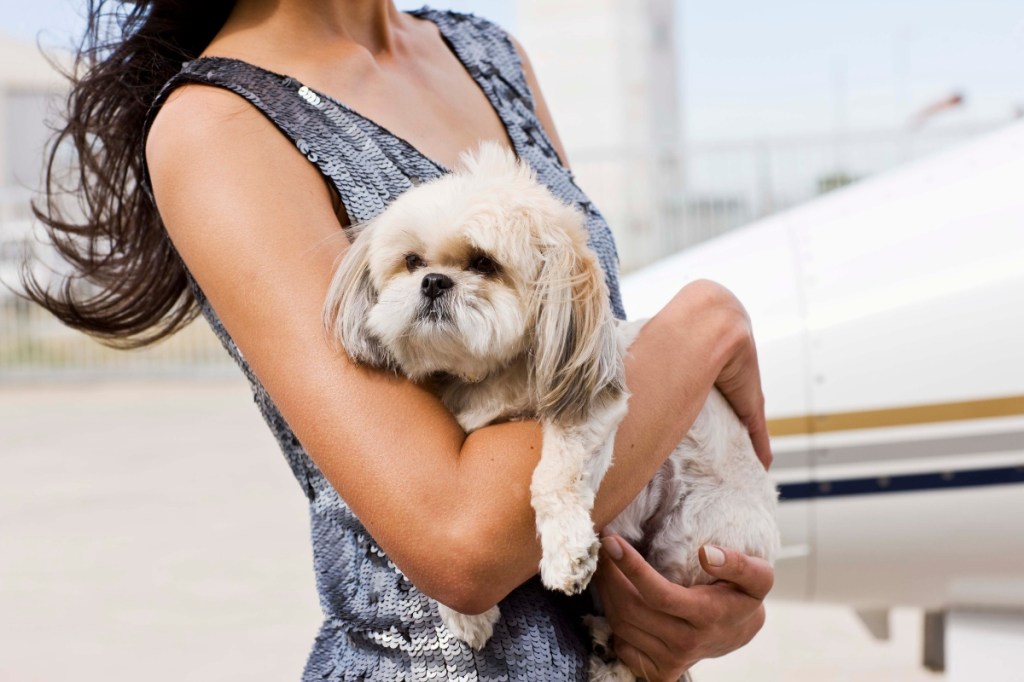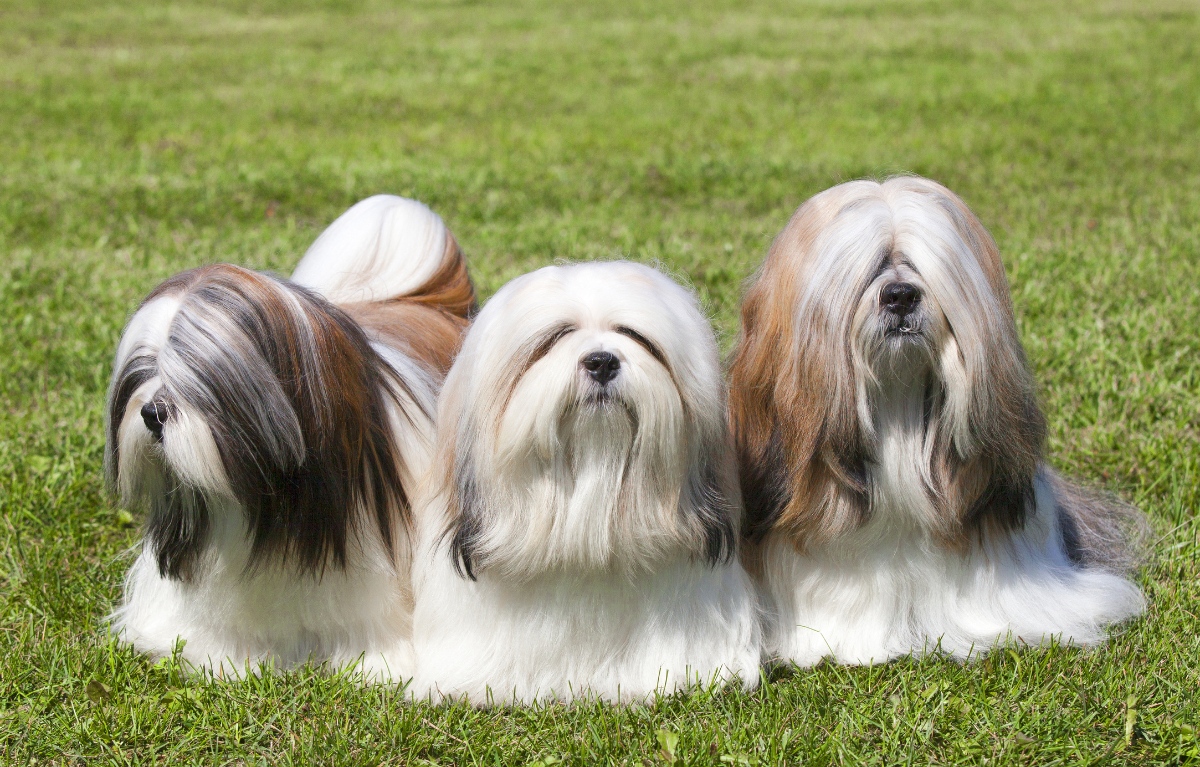Table of Contents
Introduction to Lhasa Apsos
The Lhasa apso is a non-sporting group dog that is intelligent, funny, and confident. These small dogs have a long life span and a long history that dates back over a thousand years. They are known for their floor-length coats that drape at the sides of the dog’s body and their exotic and elegant appearance that is unique and unmistakable.
From ancient monasteries and palaces to your very own living room, Lhasa apsos are loyal canine companions that are adaptable and work well in many different home environments. You can learn more about the Lhasa apso breed by reading this Healthy Paws guide, which covers everything from size to feeding, temperament, care, health, and insurance coverage.
Size of Lhasa Apsos
Female and male Lhasa apsos weigh between 12 and 18 pounds when fully grown. Males stand 10 to 11 inches tall, and females are slightly smaller. Like other smaller dogs, the Lhasa apsos reaches its final adult weight and height earlier than larger dogs. Lhasa apsos are done growing by age one, although their growth slows down after the first six months.
Here’s how big you can expect your Lhasa apso to get as the dog grows from puppyhood to adulthood:
| Weight Chart | 3 months | 6 months | 9 months | 12 months |
| Female and male Lhasa apsos | 5.5 – 7.5 lbs. | 10.5 – 14 lbs. | 12.5 – 16.5 lbs. | 13.5 – 18 lbs. |
Characteristics of Lhasa Apsos
Despite the actual size of Lhasa apsos, these pups think they are very large dogs. They once served as royal watchdogs and still have a protective nature today. Lhasa apsos are suspicious of strangers and devoted to their human companions without being aggressive.
They aren’t necessarily eager to please, which means that you may need to put some extra time into training and be consistent with it so that your dog doesn’t become manipulative and overly independent. Meanwhile, grooming a Lhasa apsos takes extra time and care to keep that iconic coat shiny and smooth.
As you get to know a Lhasa apso’s personality, here’s what you can expect based on his or her breed characteristics:
| Breed Characteristic | Level (High, Medium, Low) |
| Affectionate with People | Medium |
| Good with Kids | Medium |
| Good with Pets | Medium |
| Need for Exercise | Medium |
| Energy Level | Low |
| Intelligence Level | High |
| Able to Be Trained | Medium |
| Amount of Barking | Medium |
| Amount of Shedding | Low |

History of Lhasa Apsos
The Lhasa apsos is an ancient dog breed that has existed since at least 800 A.D. These dogs lived in the Himalayan Mountains with Tibetan Buddhists for many years. Lhasa is the capital of Tibet, and apso may be derived from the breed’s original Tibetan name or a reference to the Tibetan word for “goat.”
Lhasa apsos were sheltered and isolated from the rest of the world for centuries. In Tibet, they guarded dwellings from the inside while mastiff dogs protected outside areas. They would alert people inside about possible intruders and are also linked to the Buddhist belief in reincarnation. According to religious teachings, priests are often reborn as Lhasa apso dogs right before being born again as humans.
It was common in Tibet for Lhasa apsos to be given to others as gifts rather than sold. For example, the Dalai Lama gave one of the dogs to the emperor of China centuries ago. A later incarnation of the Dalai Lama gifted Lhasa apsos to a traveler named Charles Suydam Cutting in the mid-1900s, and the Cutting family then imported more of the breed to help it become established in the U.S. The American Kennel Club first recognized the breed in 1935.
Lhasa Apso Standard Information
The Lhasa apso breed standard describes an ideal of this breed for dogs to be compared at shows. For example, it describes the breed as small, sturdy, well-balanced, and rectangularly shaped with a dense double coat.
Separated into sections by parts of the body, here is an overview of the breed standard information for Lhasa apsos:
Head:
- Intelligent, thoughtful, and alert expression
- Round, full, almond-shaped eyes that are dark brown
- Black nose
- Level or slightly undershot bite
- Heavily feathered pendant ears
Neck, Topline, Body:
- Moderate length neck
- Deep chest and well-developed prosternum
- Well-feathered tail set high enough to be carried over the back in a curl to the side
Forequarters:
- Well-laid-back shoulders
- Elbows are close to the body
- Rib cage is oval in shape
- Legs are heavy with hair
Hindquarters:
- Hocks are well let down and set slightly behind the point of the buttocks
- Equal reach and drive as the forequarters
- Feet are well-feathered, round, and cat-like with good pads in back and front
Coat:
- Double coat with heavy, hard, dense, and straight hair
- Good length for hair
- Not silky or wooly
Color:
- All coat colors are equally acceptable
Gait:
- Smooth and effortless with good front reach and strong rear drive
- Legs move parallel coming and going
- Topline is level and tail carried well over the back, perhaps draping to the side

Caring for Lhasa Apsos
Lhasa apsos are excellent apartment dogs that are fine for novice pet parents and adaptable to various conditions. They are also sensitive dogs that dislike being alone and can be very playful.
Here are some general tips for taking the best care of a Lhasa apso:
Best Living Environments:
- Adapt well to apartments and small homes
- Climate not too hot or cold
- Households with members able to devote plenty of time to them
Type of Exercise:
- One longer daily walk or several short walks per day
- Plenty of playtime in a fenced yard
Mental Enrichment:
- Quality time sitting on your lap
- Playing with toys around your house
- A little outside time daily
Training Strategies:
- Housetraining can be a challenge
- Start crate-training early
- Keep training sessions consistent and positive
Grooming Tips:
- Brush and comb daily
- Bathe every two to four weeks
- Consider hiring a professional groomer, as Lhasa apso grooming is not an easy job
- Brush teeth daily
- Trim nails once or twice per month
- Check ears each week for infections
- Check eyes for discharge and redness
Common Health Problems of Lhasa Apsos
The average life expectancy for a Lhasa apso is 12 to 15 years. This is generally a very healthy dog; however, the breed is prone to issues with the ears, eyes, joints, and digestive system.
These are some of the most common health issues that arise with Lhasa apsos:
- Allergies
- Dental disease
- Patellar luxation
- Hip dysplasia
- Cherry eye
- Keratoconjunctivitis sicca (dry eye)
- Progressive retinal atrophy
- Sebaceous adenitis (genetic skin condition)
- Familiar inherited renal dysplasia
- Bleeding ulcers
- Kidney problems

Diet and Nutrition for Lhasa Apsos
Fully grown Lhasa apsos need ¾ cup to one cup of dry dog food daily. This total amount should be divided into two daily meals. A Lhasa apso puppy typically requires about 450 calories daily, fed in two or three daily meals. While training your Lhasa apso, make sure not to give the dog more than 10 percent of the daily calorie allowance in treats.
Where to Adopt or Purchase Lhasa Apsos
One place to start looking for a Lhasa apso of your own is the American Lhasa Apso Club, which provides a breeder listing by state. You can work through rescue organizations, such as Tzu Zoo Rescue, which matches homeless Lhasa apsos and shih tzus with loving homes. The Lone Star Shih Tzu & Lhasa Apso Rescue and Lend A Helping Paw Shih Tzu Rescue are other organizations specializing in both Lhasa apsos and shih tzu dogs.
Related Breeds
Has the Lhasa apso breed captured your attention and gotten you thinking about getting a new pet? If so, you might also be interested to learn about these similar and related breeds:
- Coton de Tulear
- Havanese
- Bolognese
- Pekingese
- Bichon Frise
Pet Insurance for Lhasa Apsos
When you have an adorable Lhasa apsos in your life, there’s no doubt that you’ll want to do everything possible to take the best care of your companion’s health. Healthy Paws offers Lhasa apso health insurance that allows you to visit any licensed veterinarian, including emergency hospitals, specialists, and alternative care providers. Our easy-to-understand pet insurance policy has no costly add-ons and provides coverage for new accidents and illnesses that are not pre-existing conditions or otherwise excluded under the policy.
From puppies to senior dogs, pet insurance is worth it whenever your Lhasa apso gets into mischief or starts feeling unwell because of a hereditary, congenital, or breed-specific condition. Our policy doesn’t discriminate against age, and we reimburse our customers quickly so you can focus on caring for your pet.
Request your Lhasa apso pet health insurance quote today to learn more!









